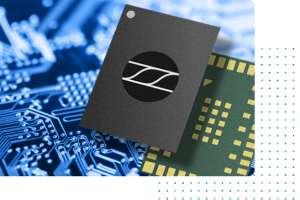Edge AI applications are shifting toward AI PCs. This shift aims to decentralize AI server workloads and broaden the AI usage spectrum.
TrendForce expects AI PCs to meet Microsoft’s benchmark of 40 TOPS in computational power.
With new products meeting this threshold expected to ship in late 2024, significant growth is  anticipated in 2025, especially following Intel’s release of its Lunar Lake CPU by the end of 2024.
anticipated in 2025, especially following Intel’s release of its Lunar Lake CPU by the end of 2024.
The AI PC market is currently propelled by two key drivers: Firstly, demand for terminal applications, mainly dominated by Microsoft through its Windows OS and Office suite, is a significant factor.
Microsoft is poised to integrate Copilot into the next generation of Windows, making Copilot a fundamental requirement for AI PCs.
Secondly, Intel, as a leading CPU manufacturer, is advocating for AI PCs that combine CPU, GPU, and NPU architectures to enable a variety of terminal AI applications.
Introduced around the end of 2023, Qualcomm’s Snapdragon X Elite platform is set to be the first to meet Copilot standards, with shipments expected in the second half of 2024. This platform is anticipated to deliver around 45 TOPS.
AMD’s Ryzen 8000 series (Strix Point) is also expected to meet these requirements. Intel’s Meteor Lake, launched in December 2023 with a combined CPU+GPU+NPU power of 34 TOPS, falls short of Microsoft’s standards. However, Intel’s upcoming Lunar Lake might surpass the 40 TOPS threshold by the end of the year.
The race among Qualcomm, Intel, and AMD in the AI PC market is set to intensify the competition between the x86 and Arm CPU architectures in the Edge AI market. Qualcomm’s early compliance with Microsoft’s requirements positions it to capture the initial wave of AI PC opportunities, as major PC OEMs like Dell, HPE, Lenovo, ASUS, and Acer develop Qualcomm CPU-equipped models in 2024, presenting a challenge to the x86 camp..
Lastly, the CPUs meeting Microsoft’s 40 TOPS requirement for NPUs include Qualcomm’s Snapdragon X Elite, AMD’s Strix Point, and Intel’s Lunar Lake.
A notable feature of these CPUs is their adoption of LPDDR5x over the current mainstream DDR SO-DIMM modules.
This choice is driven by the need for faster data transmission; DDR5 speeds range from 4800–5600 Mbps, whereas LPDDR5x reaches 7500–8533 Mbps, aiding AI PCs that require quicker language processing and responsiveness.
Consequently, TrendForce forecasts that LPDDR will represent approximately 30–35% of PC DRAM demand this year, with future increases driven by the specifications set forth by AI PC CPU manufacturers, leading to a further rise in LPDDR adoption.
 Electronics Weekly Electronics Design & Components Tech News
Electronics Weekly Electronics Design & Components Tech News



